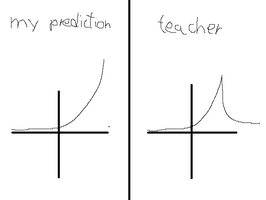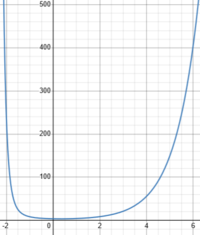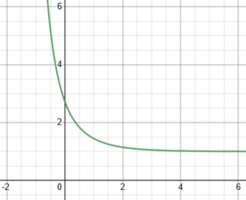In class we covered behavior of infinity of e equations. I came up with the following equation e^(-x) + e^[x + e^(-x)]. You can simplify it to e^[ e^(-x) ] so if x →+∞ f(x)→ 1 because e^(-x) approaches 0 and e^0 = 1, but if you try a large number for x like 100 you get around 2.69 * 10 ^ 43 (I could't go much further as the calculator just said infinity/overflow). I assume that the graph is going to grow and end up at 1 when you "get to infinity"(in quotation marks because infinity isn't really a number that you can reach from my understanding) but my teacher said that f(x) is going to start decreasing at one point and is going to approach 1. Is it true that the graph/f(x) at one point stops growing and starts approaching 1 and if yes, can you find out when the graph does start to approach 1. (Sorry if my english is bad and if I can't describe the problem well enough, english isn't my first language)

If this question is unfit for beginning algebra then I can post it in Intermediate algebra, I'm unfarmilliar with the classifications.

If this question is unfit for beginning algebra then I can post it in Intermediate algebra, I'm unfarmilliar with the classifications.
Last edited:


